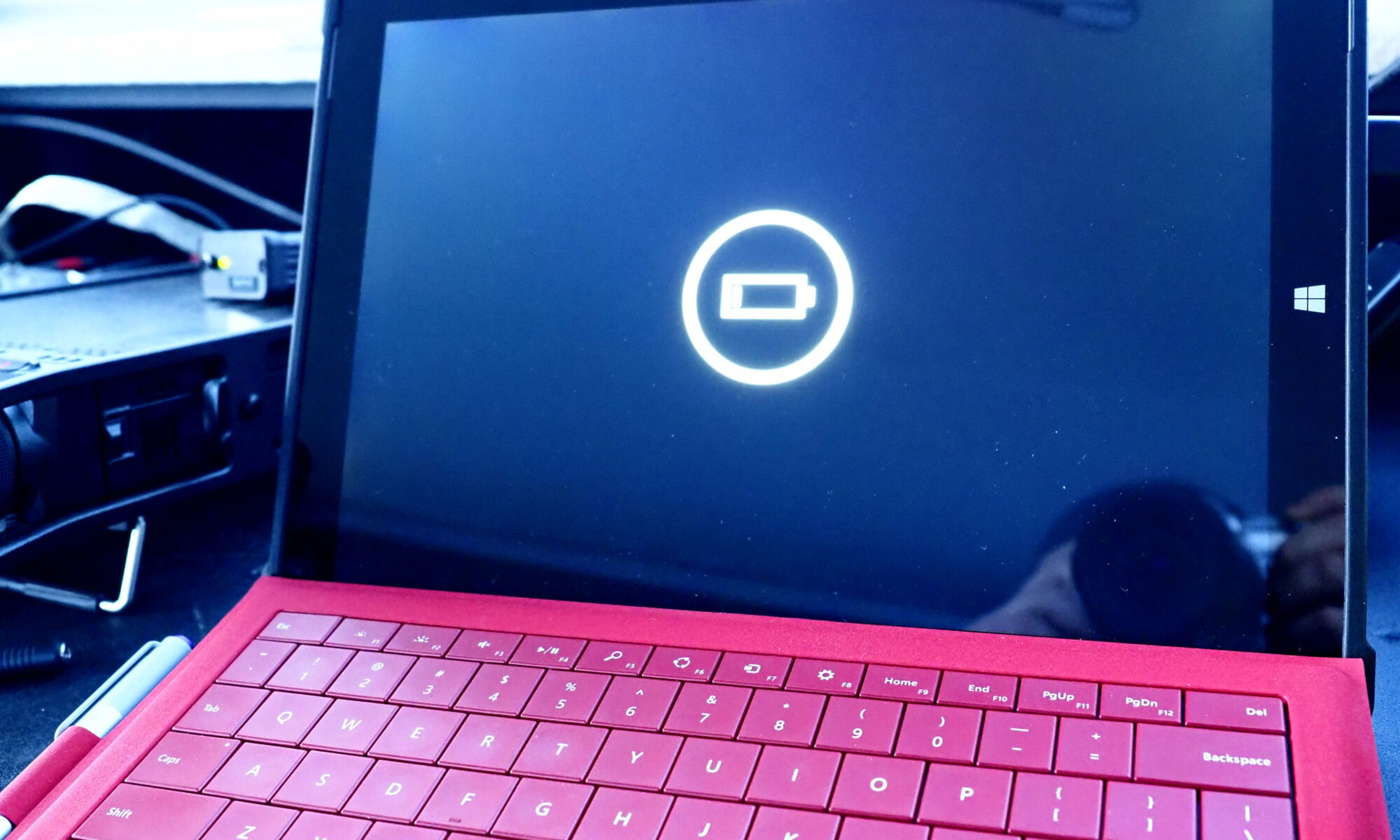Activated: 2022-01-01
Field power is the bane of portable operators. Whether it’s Summits on the Air, Islands on the Air, Parks on the Air, or any other “on the air” activity, you can’t make contacts if you can’t power your devices . . . all of your devices.
As part of a long POTA weekend I set out to activate two new parks, the first of which was Big Lake South State Recreation Site. This location is a combination of picnic area and a boat launch. In the winter the lake becomes a network of ice roads, and the boat launch is the gate you drive on to access the road.
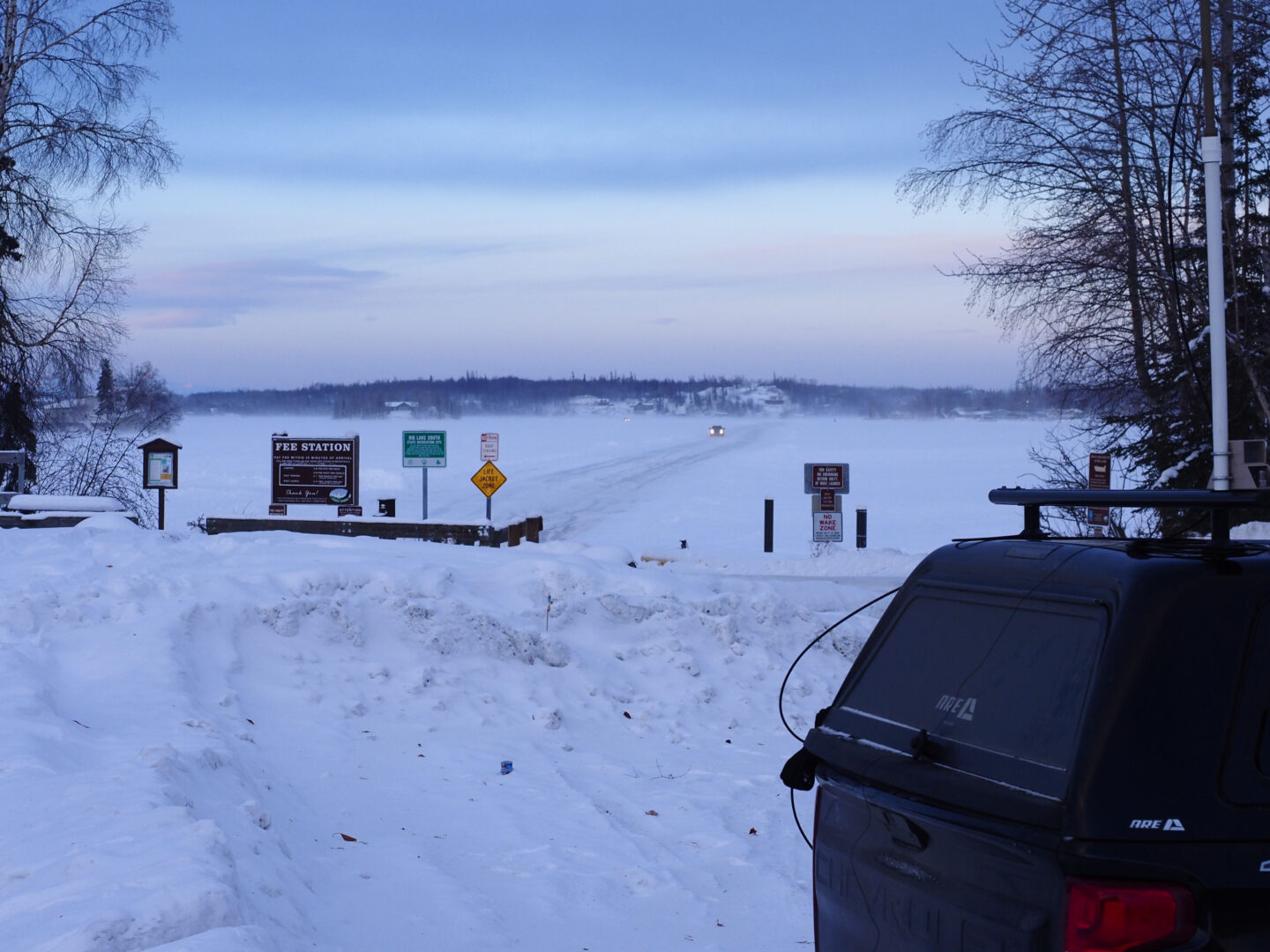
Since activating in Alaska on a frozen lake wasn’t challenge enough, I decided to go out even though there was a major wind storm in progress. Unfortunately, the wind on the lake was on the verge of snapping my MFJ telescoping vertical antenna.
After an hour or so of fussing with the setup (in the dark) I decided that the weather had won, and relocated back to the boat launch parking lot where the trees provided some cover.
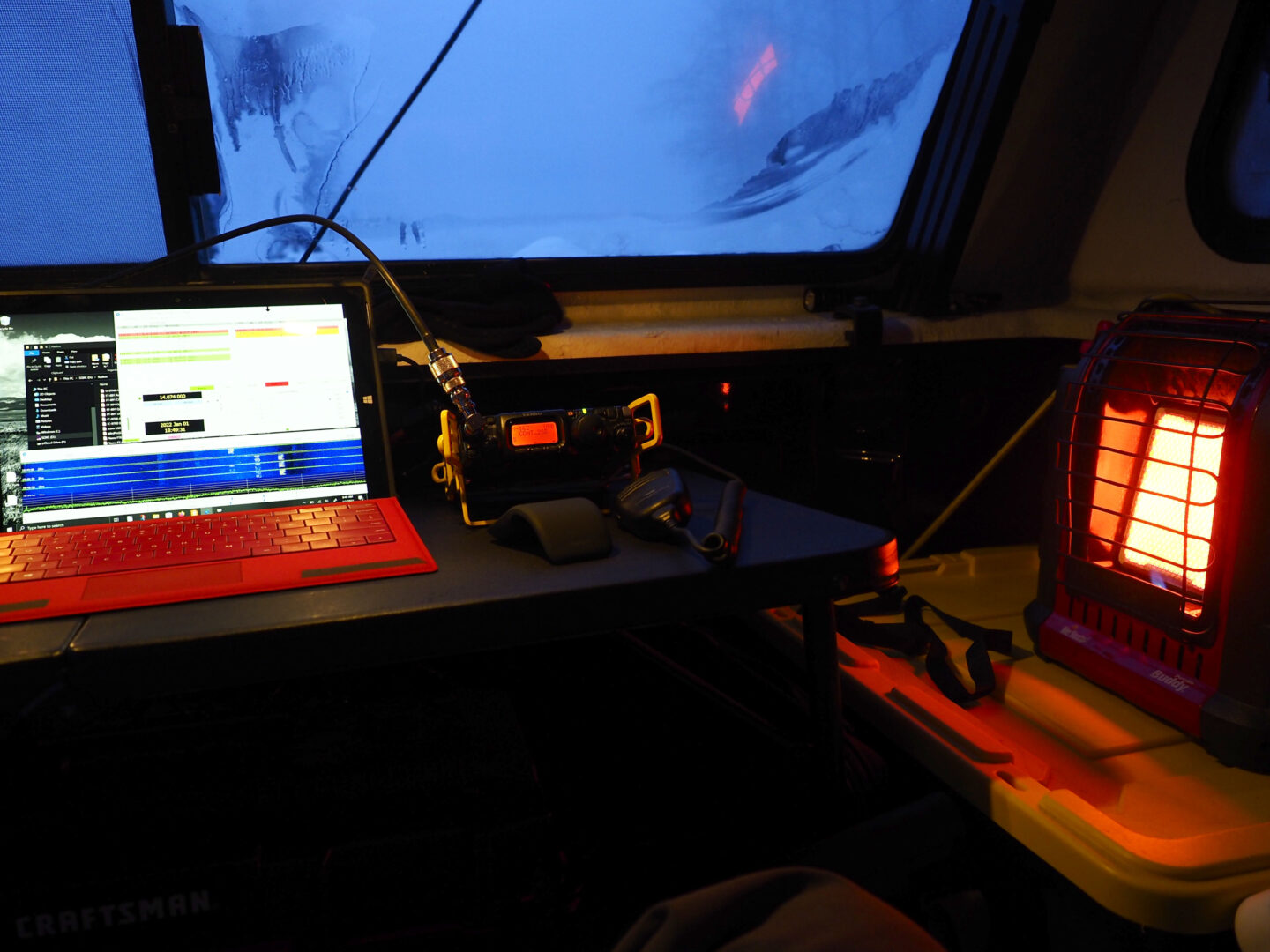
My station capabilities had been improving steadily. My primary gear consisted of:
- MFJ telescoping vertical antenna, with ground wires for the 20 meter and 40 meter bands.
- Yaesu 891 radio for HF
- Microsoft Surface laptop set up for digital operating
- LDG autotuner
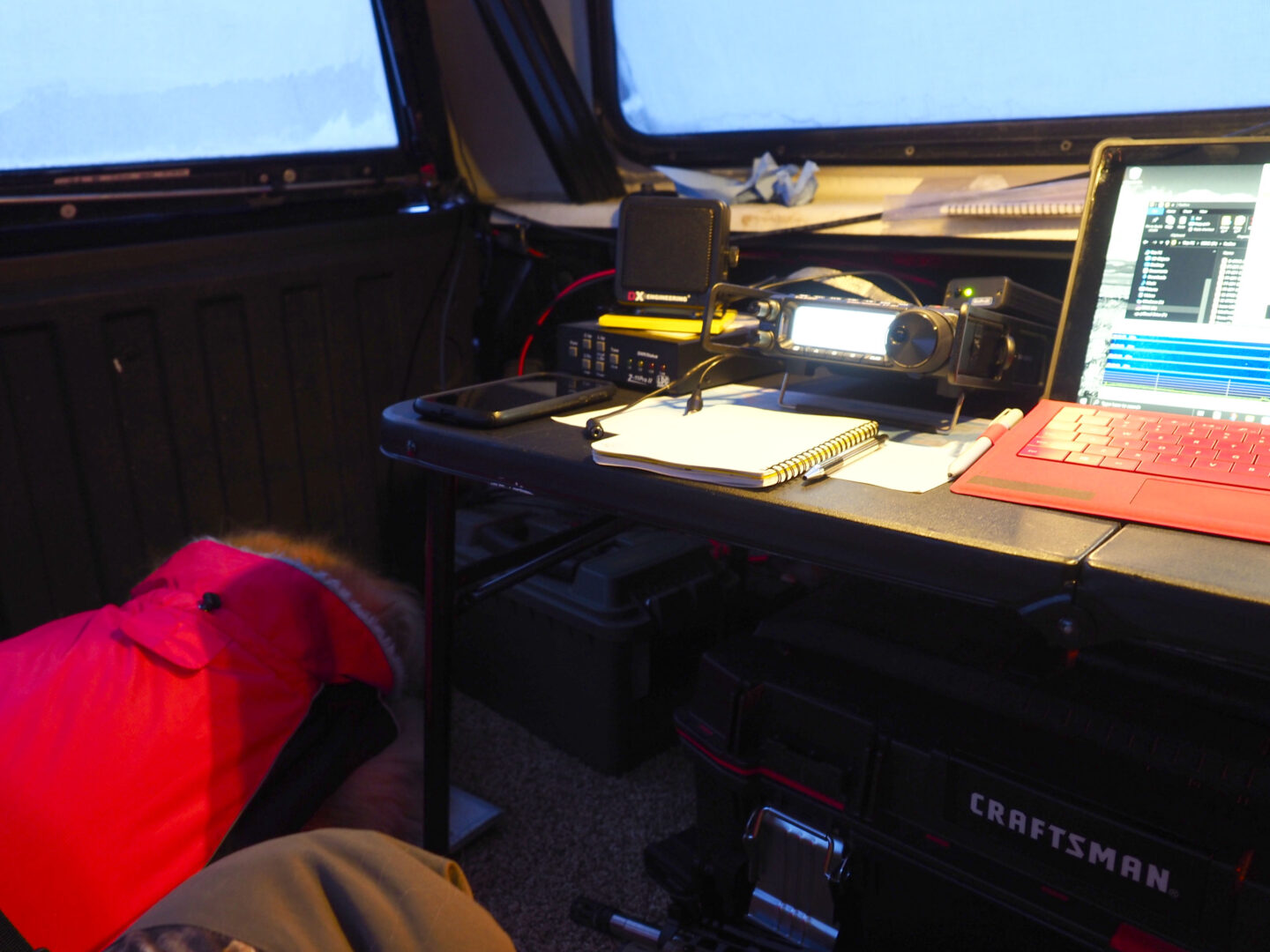
Since this location is basically “in town” (for Alaska anyway) I also brought along some VHF-UHF gear:
- Homemade 2 meter band copper pipe J-pole antenna
- Custom insulating mount for the antenna – connects to the truck roof rack
- Yaesu 817 HF-VHF-UHF QRP radio
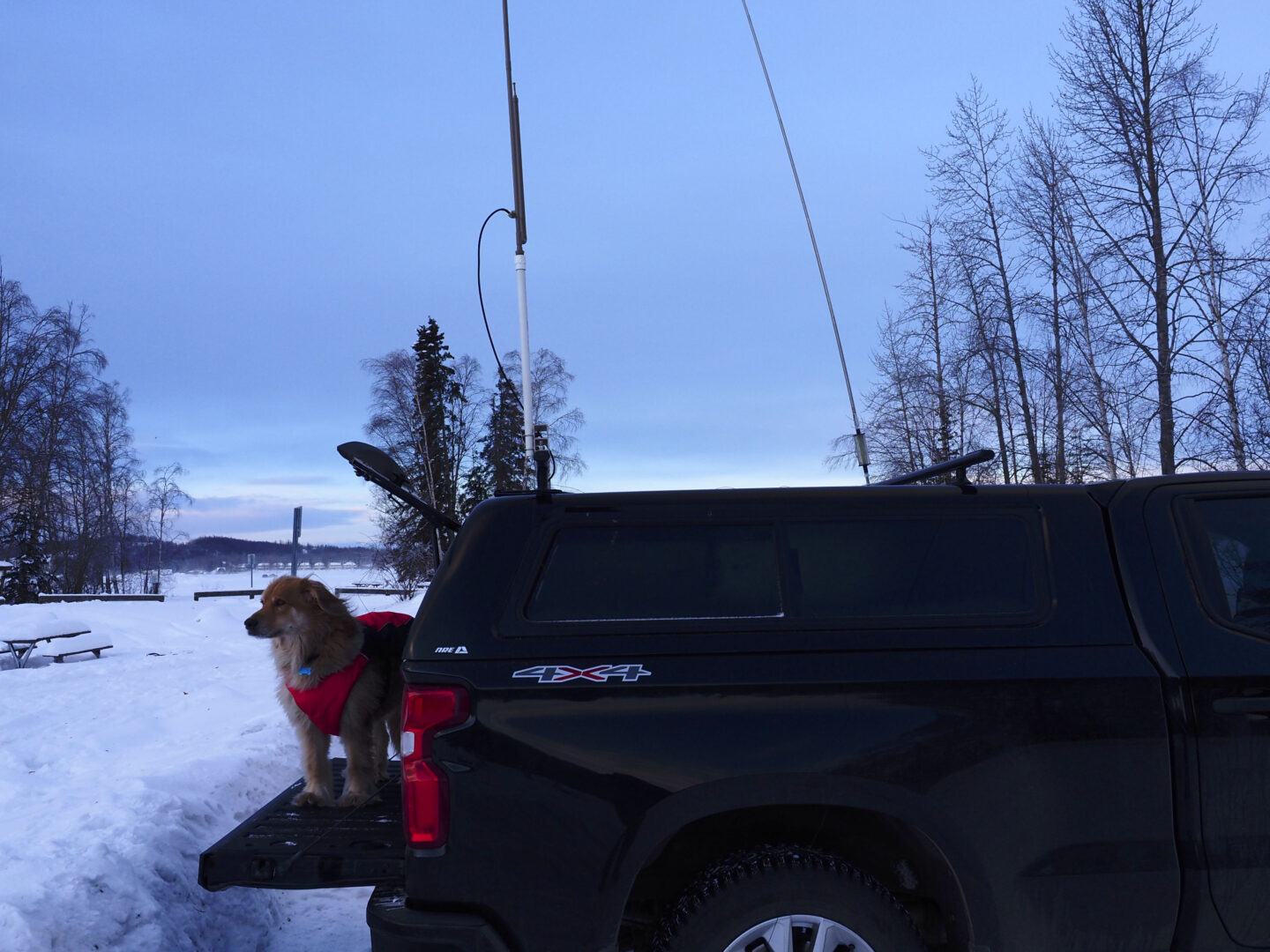
The addition of VHF-UHF gear would allow for more contact options, since I could theoretically get multiple contact from a single operator using:
- HF Voice
- HF digital
- 2 meter voice
- 70 cm voice
In practice it is rare to work a single operator on this many combinations of RF band and mode, but having the options does help. On this activation it turned out to be a lifesaver.
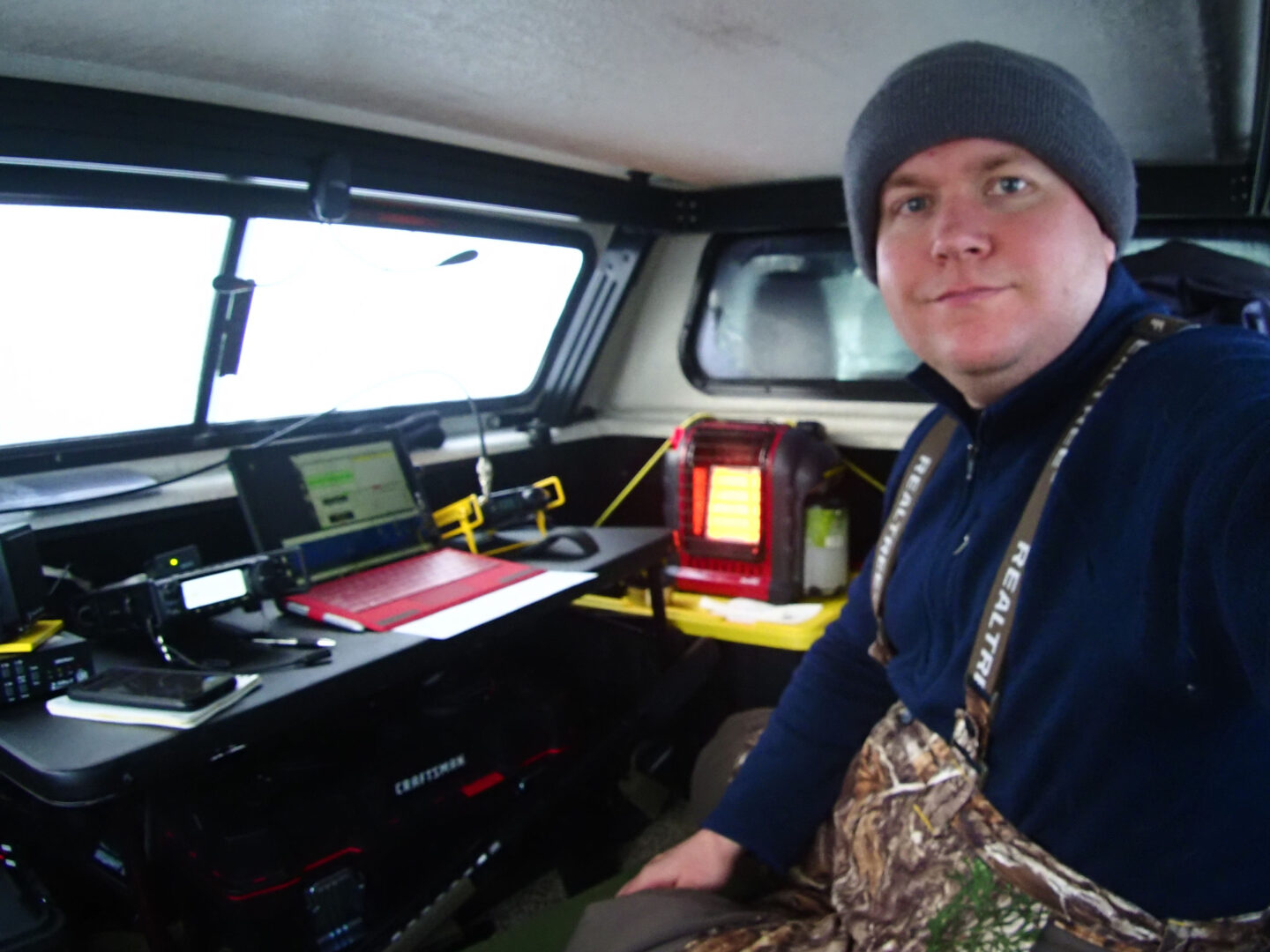
This activation was an important lesson is looking for the weak link in my field systems, and in not being too over-eager when activating in marginal band conditions. In the Alaskan winter the bands don’t even open until around ten o’clock.
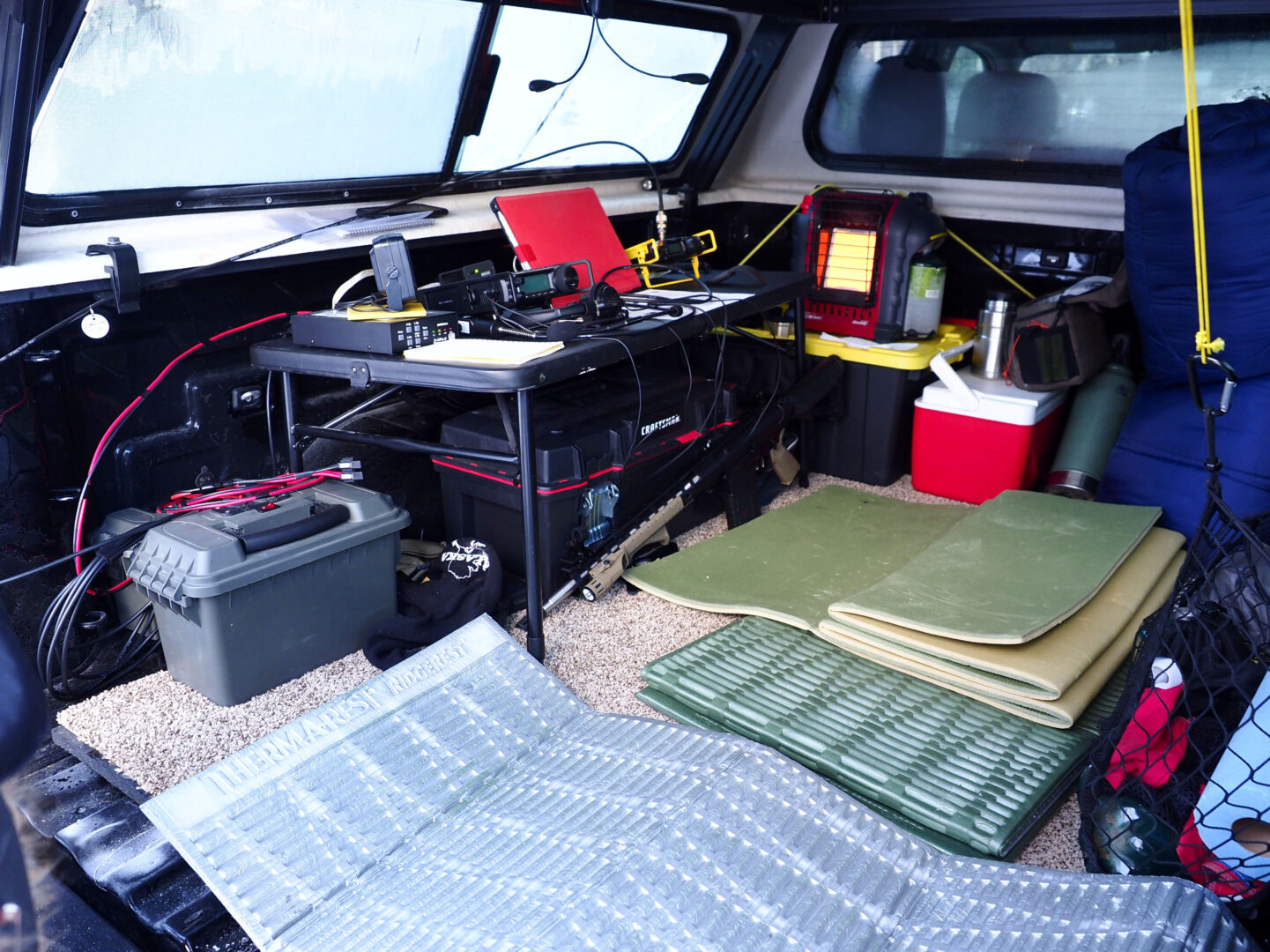
My first mistake was in setting up around eight, and burning battery power calling endlessly to stations who couldn’t hear me. (The bands finally opened around ten.) My second mistake was not having a way to charge the laptop.
By the time the 20 meter band opened up I was alread on my second battery pack, and draining that fast. The laptop battery was also getting low, with no way to recharge it. The saving grace for this activation was the VHF-UHF gear. A few of the local Matanuska Amateur Radio Association operators had heeded my calls for contacts, and handed me a few voice QSOs to finish things off before the laptop died and ended my digital operating.
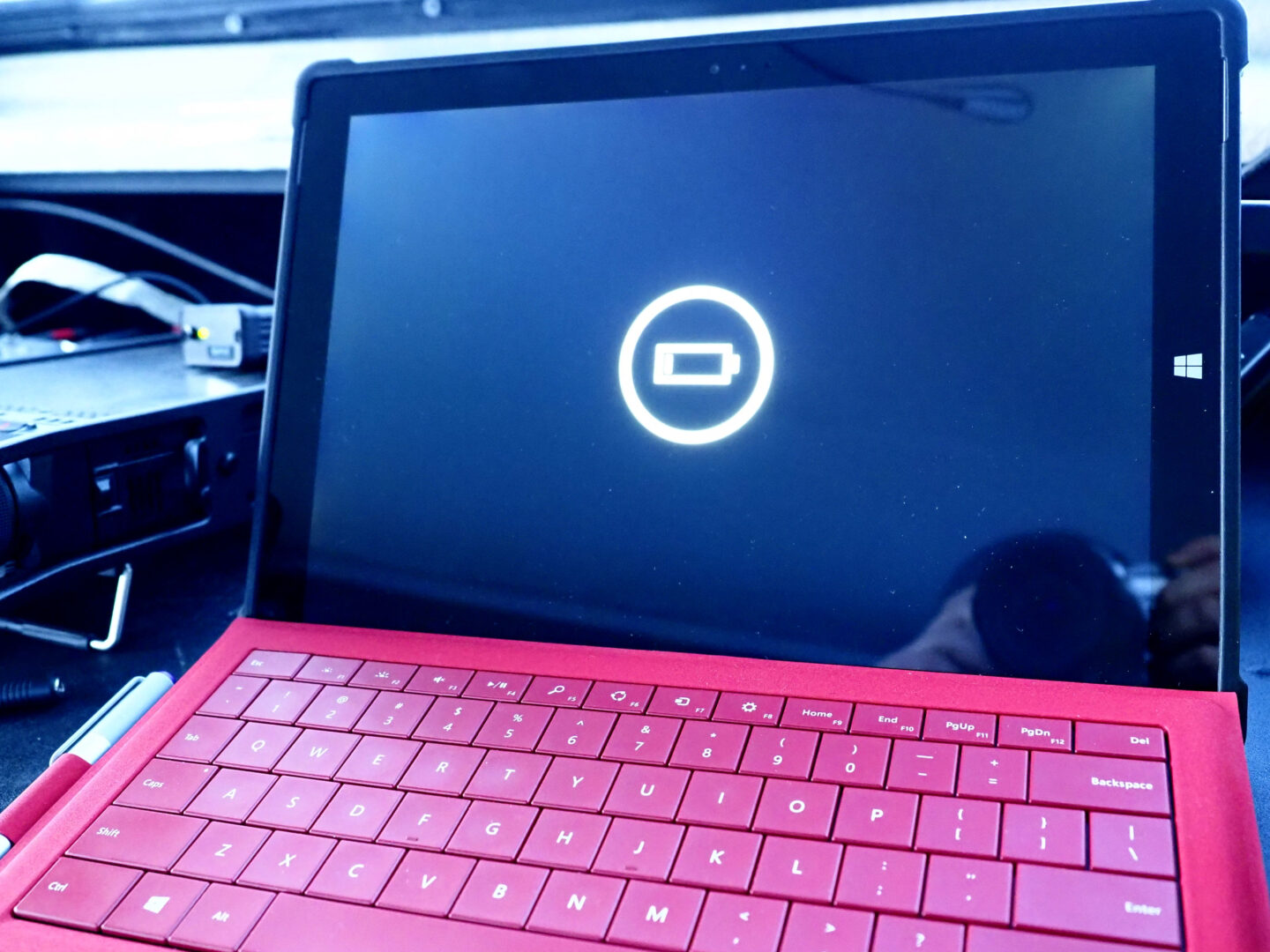
As luck would have it the activation was a success: 11 data contacts, 3 phone contacts, and a very useful lesson learned about not just having power, but being able to deliver power to ANY device that needs it.
Updated 2022-11-28

